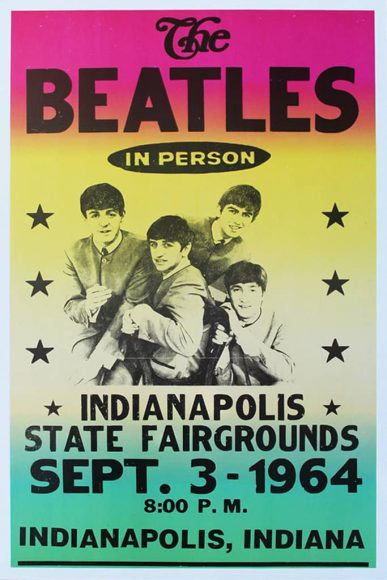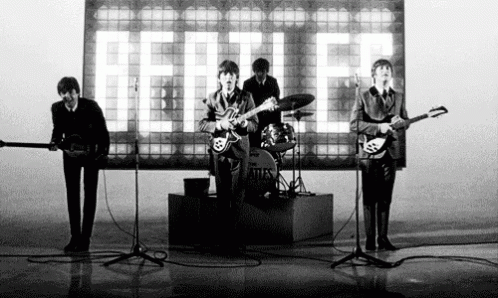After more than six weeks, I thought this would be a good time for another installment in my longest-running, irregular, and seemingly never-ending recurring music history feature, which looks at happenings in the music world on a specific date throughout the decades. While I started this series all the way back in June 2016, it’s amazing how many dates I’ve yet to cover. January 26 is one of them.
As always, these posts reflect my music taste and aren’t meant to give a full accounting of events. There are plenty of music history calendars out there, which take a more comprehensive look at the topic. With that reminder out of the way, let’s get to it. And, yes, everything music-related starts with The Beatles! 🙂
1964: The Beatles performed two concerts at The Olympia Theatre in Paris, France, according to The Beatles Bible. That bible may not be quite as popular as Jesus, but it does a meticulous job of documenting nearly every day in Fab Four history. The great resource tells us their set included eight songs: From Me To You, Roll Over Beethoven, She Loves You, This Boy, Boys, I Want To Hold Your Hand, Twist And Shout and Long Tall Sally. Doing some math here, I suppose this was the equivalent of one Grateful Dead jam or a ’70s prog rock track! The gig was part of a residency at the Paris venue, which began on January 16 and ended on February 4 that year and involved two shows each day. Here are some snippets from another gig during that residency.
1970: Simon & Garfunkel released their fifth and final studio album Bridge Over Troubled Water. While the album was well received and topped the charts in the U.S., UK and numerous other countries, the duo called it quits later that year. They did come back together for a number of reunion concerts, most notably a free gig in New York City’s Central Park in 1981 in front of half a million people. Here’s The Boxer, which like most of the other tracks on the album was penned by Paul Simon – what a timeless gem!
1973: Elton John’s sixth studio album Don’t Shoot Me I’m Only the Piano Player dropped in the U.S., four days after it had appeared in the UK. It was John’s first of three chart-topping records in a row in the UK and his second of six(!) straight no. 1 albums in the U.S. Yes, Sir Elton truly ruled the music world! The lead single Crocodile Rock also gave him his first no. 1 song in the U.S. and Canada. Notably, in the UK it would take John three more years to reach the top of the Official Singles Chart, with Don’t Go Breaking My Heart, his duet with Kiki Dee. Don’t Shoot Me I’m Only the Piano Player was the first of two albums the British artist released in 1973. The second, Goodbye Yellow Brick Road, followed in October. Here’s Daniel, the lead single from John’s first 1973 album.
1980: Prince made his debut on U.S. national television with an appearance on American Bandstand. While he already was a musical genius, clearly, the then-19-year-old didn’t seem to be comfortable being interviewed, presenting a challenge to host Dick Clark to engage in a conversation. When Clark asked him whether it was accurate that he played all instruments on “this album” (his second self-titled release), Prince answered “maybe”. Subsequently prompted by Clark to reveal how many instruments he plays, Prince paused for a few awkward seconds before answering “a thousand.” Perhaps it was a combination of his sense of humor and being shy. Once it was time to perform Why You Wanna Treat Me So Bad?, a tune off his sophomore album, Prince definitely looked much more comfortable. Also, check out Dez Dickerson’s killer guitar solo.
1997: The Blues Brothers, James Brown and ZZ Top performed at the Super Bowl XXXI halftime show in New Orleans. Titled “Blues Brothers Bash”, the show was pretty dynamic, as you might expect, based on the artists. The Blues Brothers kicked it off with Everybody Needs Somebody to Love and Soul Man before the hardest-working man in show business took the stage with a medley of I Got You (I Feel Good) and Get Up (I Feel Like Being a) Sex Machine. This was followed by the Texan trio playing Tush and Legs. For the finale, all artists came together for a great rendition of Spencer Davis Group classic Gimme Some Lovin’. Now, that’s what I call a sizzling halftime show!
Sources: Wikipedia; The Beatles Bible; Songsfacts Music History Calendar; YouTube





